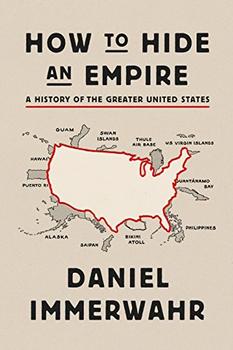

As early as the 1830s, the United States was taking control of uninhabited islands by 1898, the United States was having public debates about the merits of imperial power by the end of World War II, the United States held jurisdiction over more people overseas - 135 million - than on the mainland - 132 million. In his book, Immerwahr traces US expansion from the days of Daniel Boone to our modern network of military bases, showing how the United States has always and in a variety of ways been an empire. This is for one central reason: We omit the millions of people and large territorial holdings outside of the mainland that have, since the founding of the country, also had a claim to the flag. Immerwahr posits that, for the vast majority of people living in the contiguous United States, our understanding of our own country is fundamentally flawed.

What do we think of when we think about the United States and the country’s history? This seemingly simple question rests at the heart of Northwestern University Professor Daniel Immerwahr’s new book, How To Hide An Empire.

Bridey Heing | Longreads | March 2019 | 13 minutes (3,528 words)


 0 kommentar(er)
0 kommentar(er)
